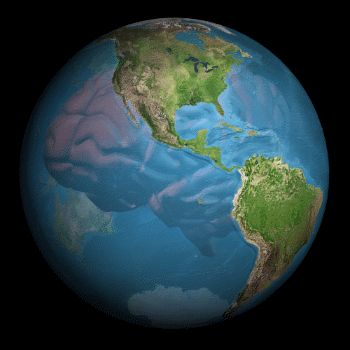Microeconomics in one Lesson
Fred E. Foldvary
[Reprinted from The Progress Report, 6 July,
2009 with permission. "Copyright 2008 by Fred E. Foldvary. All
rights reserved. No part of this material may be reproduced or
transmitted in any form or by any means, electronic or mechanical,
which includes but is not limited to facsimile transmission,
photocopying, recording, rekeying, or using any information storage or
retrieval system, without giving full credit to Fred Foldvary and The
Progress Report."]
"Demand" means a list of prices and the quantities that
people buy or would buy at those prices, holding all other variables
constant. The demand can be either during a time interval or at a
moment in time. The amount purchased at a particular price is the
quantity demanded.
Demand is graphed with the price on the vertical and the quantity on
the horizontal. Each price can only have one quantity demanded. Demand
is thus a relationship between price and quantity, when all else is
held constant. The relationship is the "law of demand," by
which a higher price will not be associated with a greater quantity.
Usually, a lower price has a greater quantity demanded, thus demand
curves slope down. But demand curves can also be vertical or
horizontal. A vertical or fixed demand means that the same quantity is
demanded regardless of price, such as perhaps for urgent medicine.
A change in demand means that at the various prices, the quantities
change. If anything changes other than price, the demand shifts. If
the price changes, then demand is unchanged, as the result is a change
in quantity demanded, not the relationship between the prices and
quantities.
Supply means a list of prices and the quantities that are sold at
those prices. The amount produced or sold at some price is the
quantity supplied. For produced goods, higher prices are associated
with greater quantities supplied. Spatial land is fixed in supply, as
the quantity supplied does not change with the rent and purchase price
of land.
With supply curves sloping up or vertical and demand curves sloping
down, the market price and quantity are set by the intersection, where
quantity supplied equals quantity demanded. That is called the
market-clearing point or equilibrium.
If the price is higher than equilibrium, quantity supplied is greater
than quantity demanded, and there is a surplus. If the price is lower
than equilibrium, there is a shortage. Market dynamics eliminate a
surplus or shortage by entrepreneurs moving the price towards
equilibrium to eliminate the surplus or shortage. Price controls such
as a minimum wage perpetuate shortages and surpluses.
A shortage is different from scarcity. A good is scarce if the
quantity demanded is greater than the quantity supplied at a price and
cost of zero. Scarce goods fetch positive market prices.
Utility is the satisfaction from or the subjective importance of
goods. Marginal utility is the gain in utility from an extra amount of
a good. There is diminishing marginal utility as extra amounts of a
good eventually provide ever less utility. Consumers maximize their
utility when the marginal utility of all goods, relative to their
prices, is equal.
An opportunity cost is what is given up to get something. A
comparative advantage means a lower opportunity cost. Trade takes
place because one provides the other with goods that have a lower
opportunity cost in exchange for those with a higher opportunity cost.
Elasticity is the responsiveness of a variable to a change in another
variable. The price elasticity of demand means the responsiveness of
quantity demanded to a change in price. A good is elastic if it is
very responsive, and inelastic if its response is relatively small.
A consumer surplus is the difference between the highest price one
would pay and what is actually paid. The benefit of goods is that
surplus. Economists call the difference between the price and the cost
of producing that next quantity the "producer surplus," but
it is usually rent that is paid to be located in more productive
locations. The social surplus is the total of the consumer and the
producer or land-rent surplus, which is maximized in a free market,
since price controls and taxes on producers and consumers reduce the
surplus.
The supply of a produced good is based on the cost of production. A
tax raises the price by the amount of the tax, and the higher price
reduces the quantity purchased and sold and produced. The reduction in
the quantity creates a misallocation and waste of resources, called a
deadweight loss or excess burden.
When the supply is vertical or completely inelastic, as with spatial
land, there is no deadweight loss. A tax on land rent or land value
reduces the price of land, since it has no cost of production, and the
tax cannot be passed on to tenants, since if it were, it would create
vacancies, and the landlords would lower the rent back to equilibrium.
An externality is an uncompensated effect on others. A negative
externality such as pollution comes from a lack of property rights,
such as to the atmosphere, and can be remedied in some cases by
negotiation, in others by lawsuits, and for large-scale pollution, by
charging polluters for the social cost. Traffic congestion can be
avoided with tolls just high enough to let traffic flow.
A collective of public goods is used by a group at the same time.
Public goods such as streets and parks increase land rent. A levy on
the rent pays back value received and avoids a subsidy to landowners
that takes place when the public goods are financed from taxes on
wages.
An accounting profit is revenue minus the explicit costs, those paid
to others. The implicit cost is the opportunity cost of foregone wages
or investment yields. The economic profit is the revenue minus all
costs, explicit and implicit. The real gain is the economic profit.
Markets have various types of competitive structures. An industry
with atomistic or perfect competition has many small firms producing
an identical product. In that case, the price efficiently equals the
marginal cost of a good, the cost of producing the next good.
An absolute monopoly is an industry or product with one seller, such
as because of a patent. Firms maximize profit at the quantity at which
the marginal cost equals the marginal (extra) revenue from one more
unit. In monopolistic competition, there are many firms producing
varieties of goods that are close substitutes, like different brands.
An oligopoly is an industry with few firms, or a few dominant firms,
in which case the actions of the other firms or the largest ones
affect the others.
To minimize the excess burden of taxation and to avoid pollution and
environmental damage, public revenue should come from land rent and
pollution levies, as well as user fees. Maximum prosperity requires
free trade, the removal of restrictions and taxes on exchange. The
replacement of taxes on wages, goods, and enterprise with a land value
tax (LVT) and pollution tax would provide maximum productivity,
greater equality, and minimum pollution.
|











